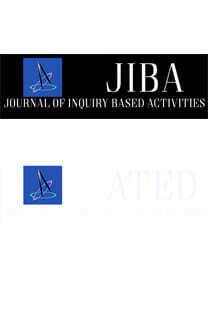İNGİLİZCE DERSİNDE ÇEVİRİNİN DOĞRU VE YERİNDE KULLANILMASI
İngilizce dersleri tamamen İngilizce kullanılarak öğretilmelidir şeklinde özetlenebilecek olan genel dil eğitimi akımlarının aksine son dönemde yapılan araştırmalar öğrencilerin ana dilinin İngilizce sınıflarında yadsınamayacak, hatta belki de kaçınılamayacak bir kaynak olduğunu göstermektedir. Özellikle çeviri, hem sınıf dışında da var olan, günlük bir iş olması açısından, hem de özellikle de başlangıç seviyelerinde yeni bir dili anlamlandırmada başvurulan ilk stratejiler arasında yer alması bakımından İngilizce derslerinde ana dilin yapıcı olarak kullanılmasını sağlayacaktır. Ancak, çevirinin ders kitabı metinlerini incelemek için kullanılması, ya da cümlelerin mot-a-mot çevirilmesi, öğretmenin yönergeleri önce İngilizce olarak, sonra da çevirerek ana dilde vermesi gibi çeviri faaliyetleri dile karşı negatif bir tutum geliştirmelerine sebep olmakta, öğrencilerin öğrenmelerini olumsuz yönde etkilemektedir. Bu etkinlik, çeviri kullanımında takip edilmesi gereken bazı temel prensipler temel alınarak oluşturulmuş, ilkokul seviyesinde uygulanarak sonuçları sunulmuştur. Böylece çevirinin dil öğrenimindeki yerini bir öğrenme stratejisi olarak yeniden konumlandıran iyi bir örnek sunulmaya çalışılmıştır
USING TRANSLATION CONSTRUCTIVELY IN THE ENGLISH LESSON
The general contention that the English lessons should be given only in English has been challenged. Students' mother tongue is indispensible, even unavoidable in the English classroom. Especially translation, which is a real life task, and a common strategy to understand a new language at the very early levels, can be constructive to learning when brought to the classroom. However, translation activities such as translation of coursebook texts, mot-a-mot translation of sentences, and translation of instructions by the teacher can be counter-productive in that they cause negative attitudes on the part of the students. This article presents an activity which is designed according to the basic principles of using translation constructively in the English classroom. It was implemented in a primary school English lesson, and the results were presented. By this means, it was aimed to reposition translation as a learning strategy in the language classroom, with an effective application
___
- Auerbach, E.R. (1993). Reexamining English only in the ESL classroom. TESOL Quarterly, 27(1), 9-32.
- Bilgin, S.S. (2015). Code switching in ELT teaching practice in Turkey: Teacher practices, beliefs and identity. Yayınlanmamış Doktora Tezi. The University of Warwick, Center for Applied Linguistics.
- Çelik, S. (2008). Opening the door: An examination of mother tongue use in foreign language classrooms. Hacettepe Üniversitesi Eğitim Fakültesi Dergisi, 34, 75-85.
- Dailey-O'Cain, J. & Liebscher, B. (2015). Primary language use in foreign language classrooms. In M.Bigelow & J. Ennser-Kananen (Eds.). The Routledge Handbook of Educational Linguistics (pp.327-338). New York: Routledge.
- Harbord, J. (1992). The use of the mother tongue in the classroom. ELT Journal, 46(4), 350-355.
- Pilot MR collection use and care guide. Retrieved June 4, 2016, from https://pilotpen.us/images/custom/GUID EUSECARMR_Mech.pdf
- Popovic, R. (2001). The place of translation in language teaching. Bridges, 5, 3-8.
- Richards, J.C. & Rodgers, T. S. (2001). Approaches and Methods in Language Teaching. 2nd Ed. Cambridge: Cambridge University Press.
- Şenel, M. (2010). Should foreign language teaching be supported by mother tongue? Journal of Language and Linguistic Studies, 6(1), 110-120.
- Üstünel, E. (2009). The Sequential Organization of Code-Switching in EFL Classrooms. Verlag Dr.
- Yatağanbaba, E. & Yıldırım, R. (2015). EFL teachers' code-switching in Turkish secondary EFL young language learner classrooms. International Journal of Linguistcs, 7(1), 82-101.
- ISSN: 2146-5711
- Yayın Aralığı: Yılda 2 Sayı
- Başlangıç: 2011
- Yayıncı: Evrim Erbilgin
Sayıdaki Diğer Makaleler
PROTECT THE ENVIRONMENT, TAKE YOUR BREATH
SABRİYE ŞENER, Ayten ÇOKÇALIŞKAN
İNGİLİZCE DERSİNDE ÇEVİRİNİN DOĞRU VE YERİNDE KULLANILMASI
TARİHTE TÜRK KADINLARI VE İLKLER
MUHAMMET AVAROĞULLARI, Zülfü ÇAPAR
ÖRÜMCEK Mİ BÖCEK Mİ? 5.SINIF ÖĞRENCİLERİ İÇİN ARGÜMANTASYON TABANLI SINIFLANDIRMA ETKİNLİĞİ
